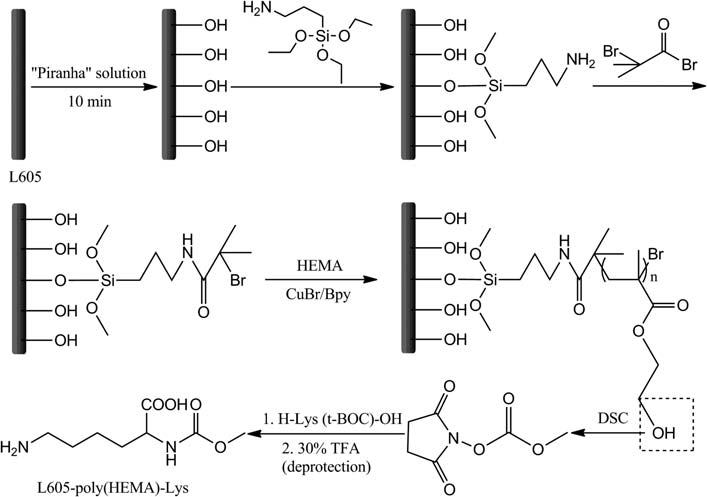A novel antithrombotic coronary stent: lysine-poly(HEMA)-modified cobalt–chromium stent with fibrino
Journal of Biomaterials Science, Polymer Edition,
2013,
24,
684-695.
文章链接:http://dx.doi.org/10.1080/09205063.2012.706470
王莎莎同学在Journal of Biomaterials Science, Polymer Edition发表研究论文
发布日期:2013-10-07
Prevention of coagulation appears not to be possible when a foreign surface is in contact with blood; the alternative concept of a clot lysing surface has therefore been suggested. In this work, a mimic of the fibrinolytic system was constructed on L605 cobalt–chromium coronary stents. Lysine which, immobilized on a surface, has been shown previously to adsorb plasminogen in contact with blood was attached to the stent using poly(2-hydroxyethyl methacrylate) (poly(HEMA)) as a spacer. The lysine-poly(HEMA) modified stent was shown to have low nonspecific protein adsorption and to bind plasminogen in high quantity from plasma. Following exposure to plasma and treatment with tissue plasminogen activator, the lysine-modified stents showed clot-lysing properties in vitro while the unmodified L605 stents did not. It was shown that the modified stents retained their clot lysing properties after 24 h exposure to plasma.

